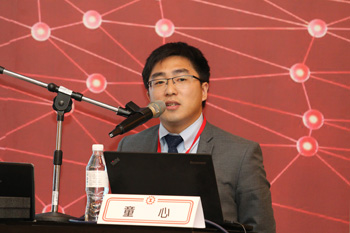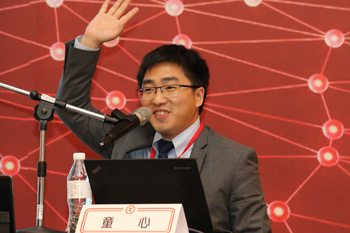China’s patent market is very complex. Different enterprises have different operating units and different operating conditions. “So what kind of IP policy should be implemented to enable a balance of profit between patent holders and patent implementers?” This is one of the major challenges facing Chinese policymakers and the IP directors of Chinese enterprises. It is also one of the key tasks of Inteq Technologies – a newly established subsidiary of ZTE.
As the number of patent applications continues to increase, “IP Monetization” has become a hot topic in China and around the world. Simply put, “IP monetization” is the process by which intellectual property rights are exploited for profit. Enterprises have to pay renewal fees on any patents they hold to maintain their validity, which means that IP department heads are interested in making intellectual property an asset for a company, rather than a liability. Marco Tong, ZTE senior licensing director and president of Inteq Technologies, shared his views on this topic in a speech entitled “Patent Monetization Practice in China” at a seminar in late March.
 
Marco Tong, ZTE senior licensing director and president of Inteq Technologies; Photo by Tommy Tang
Although Tong stressed from the outset that the content of his speech should only be taken as his personal opinion, with years of experience working for ZTE and in the IP field, he had a lot of wisdom to offer up.
Tong suggested that there are two issues worth discussing:
(1) |
In China, what does “monetization” mean?
- |
The narrow definition of “monetization” is “How can one make money?”, or, “How can one transform an IP division from a cost center to a profit center?” This is the main task Tong undertakes at ZTE, including patent licensing and sales.
|
|
(2) |
What is the real situation of the patent market in China?
- |
Tong indicated that the patent system in China is only 30 years old, dating it from the establishment of the patent law. Starting from nothing, China has now rocketed to the number one spot in terms of patent application filings, with many Chinese enterprises also filing patents around the globe. China’s patent market is very complex. Different enterprises have different operating units and different operating conditions. “So what kind of IP policy should be implemented to enable a balance of profit between patent holders and patent implementers?” This is one of the major challenges facing Chinese policymakers and the IP directors of Chinese enterprises.
|
|
Tong explored these two issues from two perspectives: in terms of individual enterprises and in terms of the broader patent market in China.
The Outstanding Performance of ZTE in the IP Arena
ZTE has had comparative success in terms of IP and patent development and management, as the following data suggests:
- 66,000 global patents and applications.
- WIPO top-3 applicant 6 years in a row, ranking No.1 in 2011, 2012 and 2016.
- ZTE has invested 10% of its annual revenue in R&D, in the top three Chinese companies and top 80 global public companies. Given that, according to company data, ZTE’s annual revenue stood at RMB¥101.23 billion in 2016, this suggests the firm will invest RMB¥10.12 billion in R&D in 2017.
- ZTE has 20 global R&D centers located in the US, Canada, Japan, Sweden and France, offering support for customers buying the company’s products in those countries.
The above data suggests that ZTE is an innovator with a leading position in the global market. Tong indicated that since the company has devoted huge resources in its R&D and innovation, ZTE understands that innovation is difficult and costly. He added that ZTE tries to make the most of its own intellectual property, as well as respecting that of other innovators.
Since ZTE is a key player in the communications equipment field, another important issue is SEPs (Standard Essential Patents). Compatibility and interconnectivity is a must for communication devices, so standardization is very important. As a key player and patent owner in the communications field, ZTE is also an important member in many SSOs (Standard Setting Organizations). ZTE understands, respects and honors its FRAND licensing commitments and obligations with the expectation that all SSO members will do the same, according to Tong. The company holds membership seats in more than 70 international organizations and forums, has delivered more than 30,000 international standard proposals and more than 13,000 3GPP proposals.
The Booming China Patent Market
How big is the patent market in China? How prosperous is it? We can get some clues from the data of the China patent market in 2015:
- Large quantity of patent filings in China:
- China’s State Intellectual Property Office (SIPO) ranked first among the top five IPOs for 5 years in a row in terms of patent filings received, including 1 million applications in 2015 (43,000 PCT application in 2016, global 3rd).
- 263,000 invention patents granted in 2015.
- A growing patent market:
- 159,640 transactions in 2015 in China, an increase of 21.9% from 2014
- 18,072 patents licensed, a decrease of 28% from 2014
Although nearly 160,000 transactions is a huge number, compared with a million patent applications, it is comparatively low, hence Tong believes the Chinese patent market has huge potential to grow. (Note: data from CNIPR.com)
Patent Licensing Market in China – Huge Potential
As the number of granted patents grows, these patents need to be introduced on to the market, and that is why the patent licensing and transaction market of China is booming. Tong believes the patent licensing and transaction market will be prosperous only if the following factors are in place:
- Patent quality and quantity
- Booming manufacturing/sales market
- Sufficient legal protection
- Patent professionals
Tong predicts that the patent market of China will face huge changes within 2-3 years, and it is very possible that China will replace the US, to become the largest patent market in the world. The main reason for this is that the Chinese government has made a lot of effort to promote the development of IP, including:
- The introduction of the 2020 IP Strategy
- The implementation of the Made in China 2025 Plan
- Amendment of the Patent Law and the establishment of IP Courts, with some milestone cases already under their belts
- Further investment in IP-related industries
The Introduction of INTEQ Technology: ZTE’s Integrated Patent Management Platform
ZTE has put its money where its mouth is in the establishment of an incorporated IP subsidiary Inteq Technologies Co. in Shenzhen in 2015. Inteq will be the ONLY patent management platform of ZTE covering the following business areas:
- Patent and technology licensing
- Patent and technology transfer
- IP consulting
- IP investment and financing
An Exchange with Inteq Technologies president Marco Tong
NAIP Reporter: |
Is Inteq Technologies an NPE? |
Present Tong: |
No. Inteq Technologies is a 100% subsidiary of ZTE and is the unique patent management platform of ZTE. The business of Inteq Technologies includes patent and technology licensing, patent and technology transfer, IP consulting, and IP investment and financing. It is clear that Inteq Technologies is not an NPE that derives profit through patent litigation. |
NAIP Reporter: |
Is Inteq Technologies only serving ZTE or will it target global enterprises? |
Present Tong: |
We target different customers according to business sector. For instance, in terms of patent transactions, Inteq Technologies can sell ZTE’s patents as well as assisting other enterprises in selling their patents. |
NAIP Reporter: |
What is the operating model of Inteq Technologies? Are they only concerned with licensing patents or will they also work on the implementation of patented technology with clients? |
Present Tong: |
Inteq Technologies is not interested in developing patentable technology with clients at this time, but we can assist clients in their search for appropriate R&D partners and investors, as well as assisting clients in transferring their technology or products. |
NAIP Reporter: |
In contrast to Qualcomm, ZTE’s main revenue stream is the sales of communications equipment. If its subsidiary Inteq Technologies is in charge of the IP licensing and technology transfer and transaction business, will there be any conflicts between the company and its customers (since some of Inteq Technologies’ customers will presumably be running similar businesses to that of ZTE)? |
Present Tong: |
The businesses of Inteq Technologies and its mother company ZTE are clearly segmented. Inteq Technologies focuses on the commercial activity of patents, and targets as its objective the development and progress of the entire IP industry. We also aim to assist innovators in their work – forming part of a feedback value chain, achieving a win-win relationship with our customers. |
| Author: |
Anita Li |
| Current Post: |
Chief Editor, NAIP Newsletter |
| Education: |
MA Journalism, China Culture University (Taiwan) |
| Prior Posts: |
Chief Editor, Solid State Technology -Taiwan
Chief Editor, CompuTrade International
Overseas Correspondent, Dempa Shinbun |
|
|
|
| Facebook |
|
Follow the IP Observer on our FB Page |
|
|
|
|
|
|

